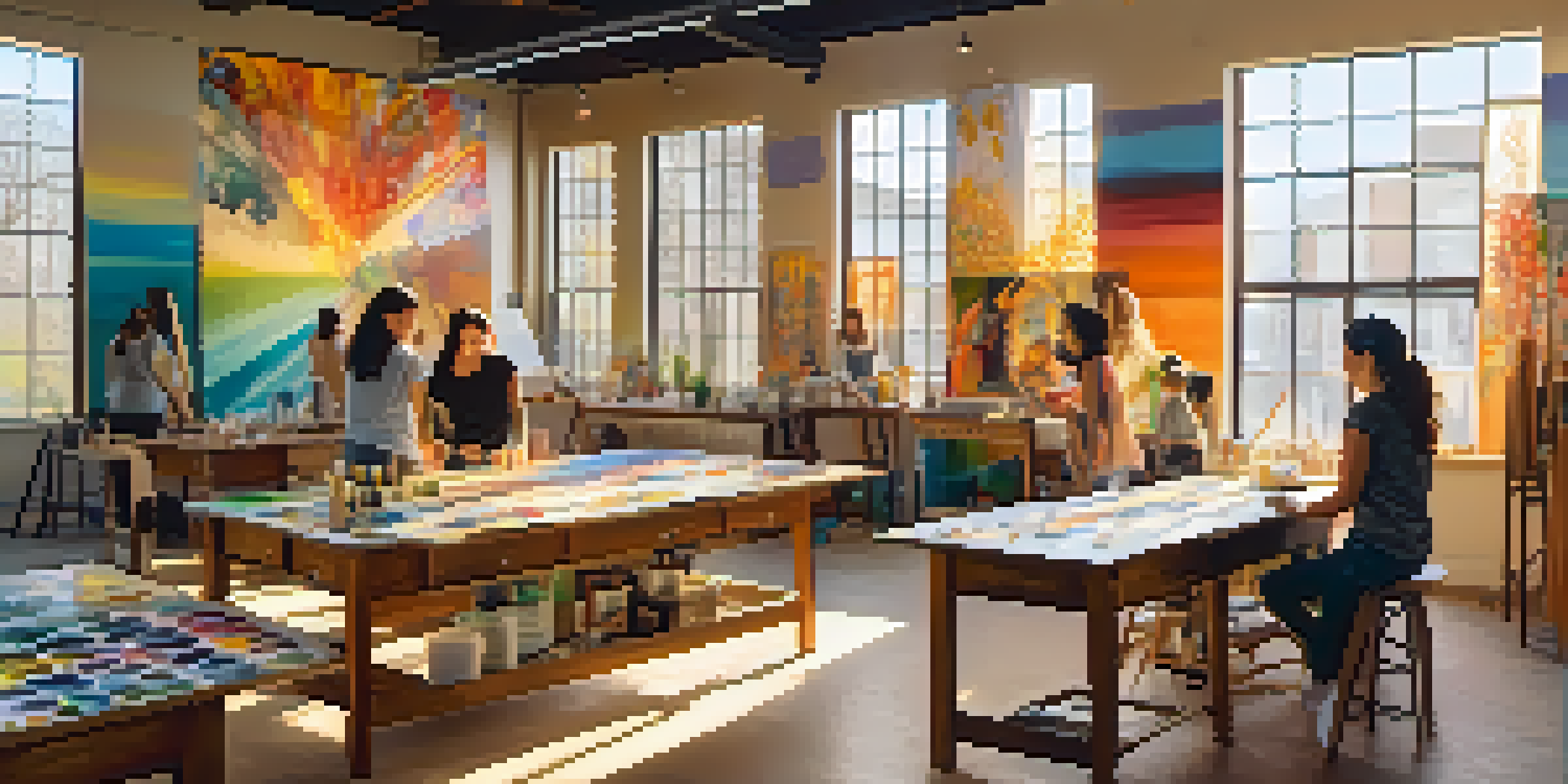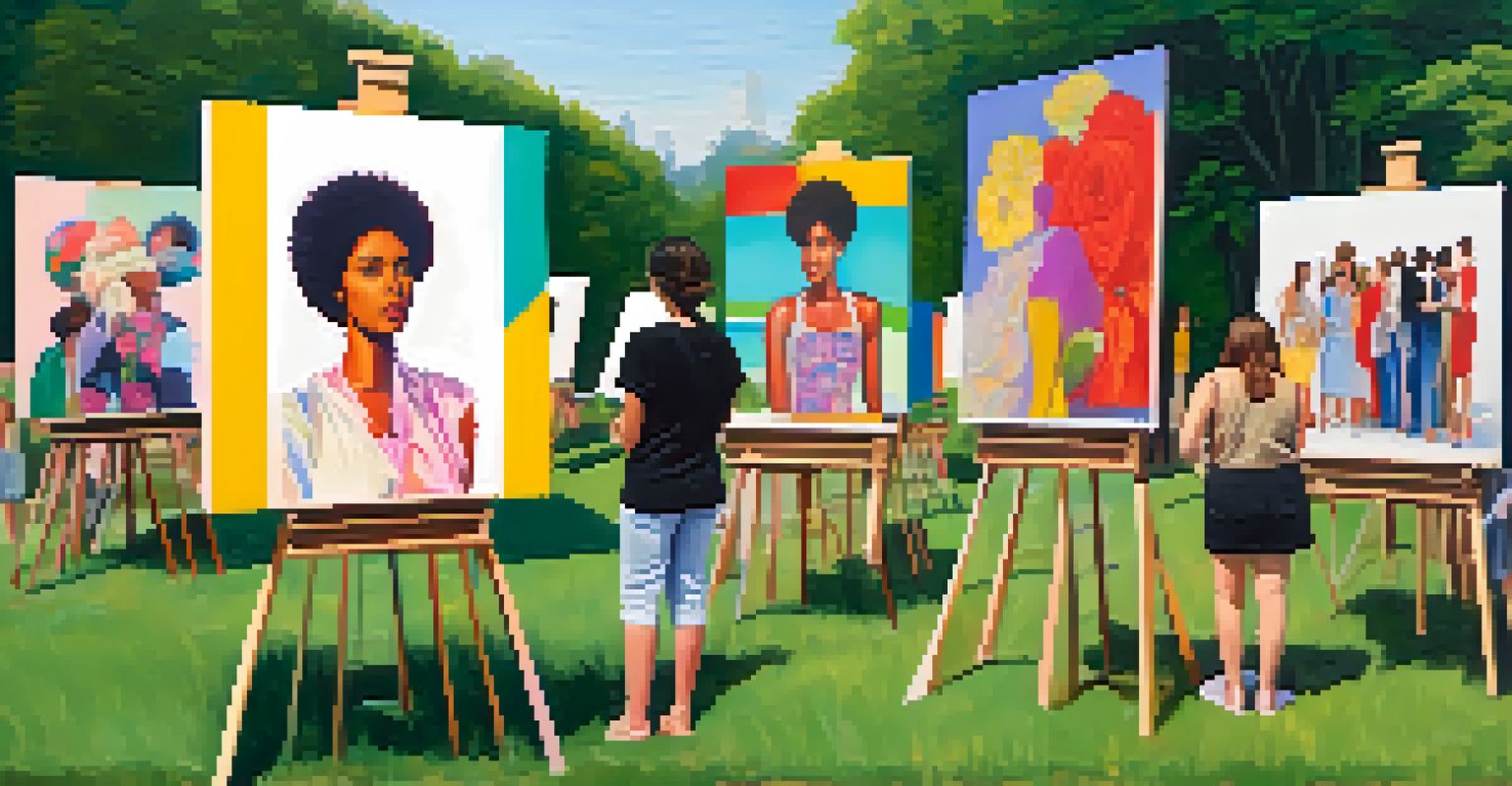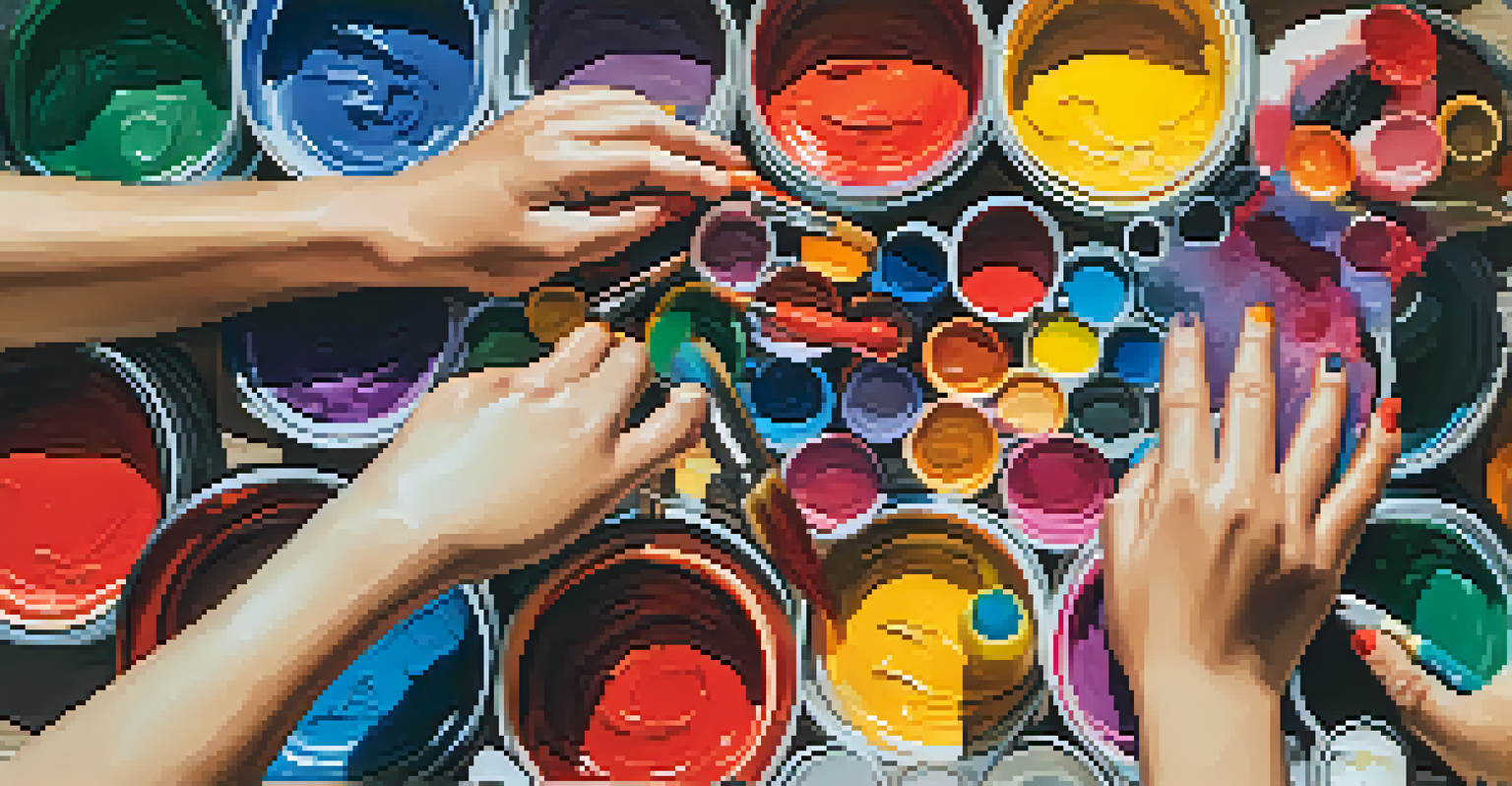Women in Art: Feminist Resistance Through Painting

The Evolution of Women in the Art World
Historically, women artists have been sidelined in the art world, often overshadowed by their male counterparts. This exclusion not only limited their visibility but also restricted their opportunities for recognition and success. However, over the last century, the landscape has begun to shift as more women have taken center stage, challenging the norms and asserting their presence. The rise of feminist movements has played a crucial role in this transformation, prompting society to reevaluate the contributions of women in art.
I am my own muse, the subject I know best.
Women artists like Georgia O'Keeffe and Frida Kahlo emerged as trailblazers, using their work to express their unique perspectives and experiences. O'Keeffe's vibrant landscapes and Kahlo's deeply personal self-portraits captured the essence of femininity while pushing boundaries. These artists not only paved the way for future generations but also inspired a reevaluation of what constitutes 'great' art, urging audiences to embrace diverse narratives.
As more women entered art schools and gained access to exhibitions, they began to form communities and support networks. This camaraderie helped to foster a sense of empowerment, encouraging women to express themselves freely. The evolution of women in the art world illustrates a broader societal change, reflecting a growing acknowledgment of women's rights and their integral role in culture.
Feminism and Art: A Powerful Connection
Feminism and art have long been intertwined, with many female artists using their work as a platform for feminist ideas. Through their paintings, they challenge patriarchal norms and explore themes of identity, body politics, and gender roles. This artistic expression serves as a powerful tool for resistance, allowing women to voice their dissent and advocate for change. The art becomes not just a reflection of their experiences but also a call to action for viewers.

For instance, artists like Judy Chicago and her iconic installation 'The Dinner Party' highlight women's contributions to history and art. By celebrating female figures often forgotten or ignored, Chicago's work serves as both a tribute and a challenge to the male-dominated narrative. This intersection of feminism and art encourages viewers to reconsider the stories they have been told and to acknowledge the broader spectrum of human experiences.
Women Artists Transform the Scene
Over the past century, women have increasingly challenged traditional norms in the art world, gaining visibility and recognition for their contributions.
Moreover, contemporary artists are redefining the feminist narrative through innovative techniques and mediums. By incorporating technology, performance, and mixed media, they expand the boundaries of traditional painting while addressing modern feminist issues. This evolution reflects a dynamic dialogue between art and feminism, showcasing how creativity can drive societal change.
The Role of Community in Artistic Expression
Community plays a vital role in the artistic journey of women, providing support and encouragement as they navigate the challenges of the art world. Artists often find strength in collaboration, creating spaces where they can share ideas and experiences. This communal spirit not only fosters creativity but also cultivates resilience in the face of adversity. By uplifting one another, women artists can amplify their voices and reach wider audiences.
The only way to deal with this is to make art. You make art to change the world.
Collectives like The Guerrilla Girls have become synonymous with feminist art activism, using humor and bold visuals to address issues like sexism and racism in the art world. Their impactful campaigns illustrate how collaboration can be a form of resistance, challenging the status quo while raising awareness. The power of community lies in its ability to unite artists under a common cause, encouraging collective action and sparking conversations about inequality.
Through exhibitions, workshops, and mentorship programs, women artists are creating networks that empower future generations. These initiatives not only provide resources but also foster a sense of belonging within the art world. As women continue to support one another, they pave the way for a more inclusive and equitable artistic landscape.
Breaking Boundaries: Diverse Feminist Perspectives
Feminism in art is not a monolith; rather, it encompasses a myriad of perspectives that reflect the diversity of women’s experiences. Artists from different cultural backgrounds bring unique narratives to their work, challenging the dominant discourse and expanding the feminist dialogue. This intersectionality is crucial in understanding how race, class, and sexuality influence the art created by women. The richness of these diverse voices strengthens the feminist movement within the art world.
For example, artists like Yayoi Kusama and Lubaina Himid infuse their cultural identities into their artwork, addressing themes of mental health, colonialism, and self-identity. Their distinct perspectives not only resonate with specific communities but also encourage a broader audience to engage with complex social issues. By breaking boundaries, these artists invite viewers to reflect on their own experiences and biases.
Feminism Fuels Artistic Expression
Many female artists utilize their work as a platform for feminist ideas, addressing themes of identity and advocating for social change.
Incorporating multiple perspectives within feminist art allows for a more holistic understanding of the challenges women face. This inclusivity fosters empathy and promotes dialogue, creating a space where diverse voices can be heard and appreciated. By celebrating this diversity, the art world can move toward a more equitable future.
Art as a Form of Political Activism
Art has long been a powerful medium for political activism, and women have harnessed its potential to advocate for social change. Through their paintings, artists address pressing issues such as gender inequality, reproductive rights, and violence against women. This form of activism not only raises awareness but also inspires action, encouraging viewers to engage with these critical topics. By using their creative voices, women artists create a sense of urgency around social justice.
For instance, the works of artists like Kara Walker and Faith Ringgold tackle historical injustices and contemporary racial issues, illustrating the interconnectedness of gender and race. Their bold imagery prompts viewers to confront uncomfortable truths, sparking conversations that challenge societal norms. By positioning their art as a form of activism, these artists invite audiences to reflect on their roles in the fight for equality.
Furthermore, the rise of social media has amplified the reach of feminist art, allowing artists to connect with a global audience. Platforms like Instagram and Twitter provide a space for women to share their work and voice their concerns, fostering a sense of solidarity among activists worldwide. This digital age has transformed the landscape of art and activism, enabling women to mobilize and effect change on a larger scale.
The Impact of Feminist Art on Society
Feminist art has the power to reshape societal perceptions, challenging ingrained stereotypes and advocating for gender equality. By presenting alternative narratives and highlighting the experiences of women, artists create a platform for dialogue and reflection. This shift in perspective can foster a greater understanding of women's rights and the importance of equality in all aspects of life. As feminist art gains visibility, it encourages society to reconsider its values and beliefs.
Moreover, the influence of feminist art extends beyond the gallery walls, permeating popular culture and inspiring change in various industries. From fashion to film, the themes explored in feminist art resonate with audiences, prompting discussions about representation and inclusivity. By infiltrating mainstream culture, feminist art amplifies its message, making it more accessible to a broader audience.
Community Strengthens Women's Voices
Supportive networks and collaborations among women artists foster creativity and resilience, amplifying their voices in the art world.
As more people engage with feminist art, the movement continues to grow, creating a ripple effect that challenges societal norms. This ongoing dialogue encourages individuals to reflect on their beliefs and behaviors, fostering a culture that values equality and respect. The impact of feminist art is profound, reshaping the way we view gender and inspiring future generations to advocate for change.
Looking Ahead: The Future of Women in Art
As we look to the future, the landscape for women in art continues to evolve, with increasing opportunities for representation and recognition. The commitment to diversity and inclusion within galleries and institutions is gaining momentum, paving the way for a more equitable art world. This shift not only benefits women artists but also enhances the richness of the artistic community as a whole. The future holds great promise for female creatives seeking to make their mark.
Emerging artists are pushing boundaries, experimenting with new mediums and themes that reflect contemporary issues. Their innovative approaches challenge traditional definitions of art and invite audiences to engage with their work in fresh ways. As these artists gain visibility, they inspire a new generation of creators to explore their unique stories and perspectives.

Ultimately, the future of women in art is bright, fueled by the ongoing efforts of those who champion equality and inclusivity. By continuing to support and celebrate female artists, we can ensure that their voices are heard and their contributions are recognized. As we move forward, it is essential to embrace the diversity of experiences and narratives that women bring to the art world, enriching our collective understanding of what art can be.